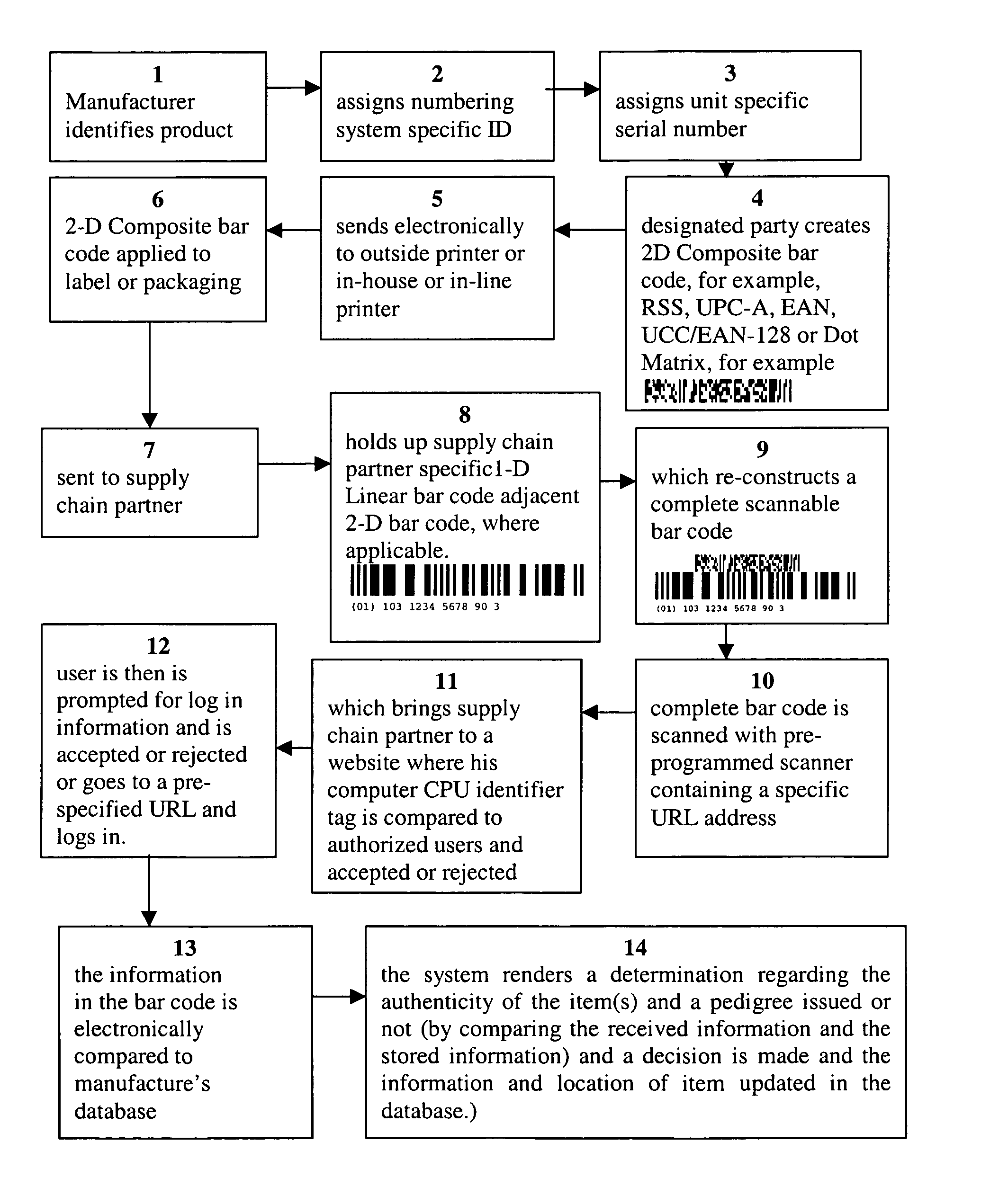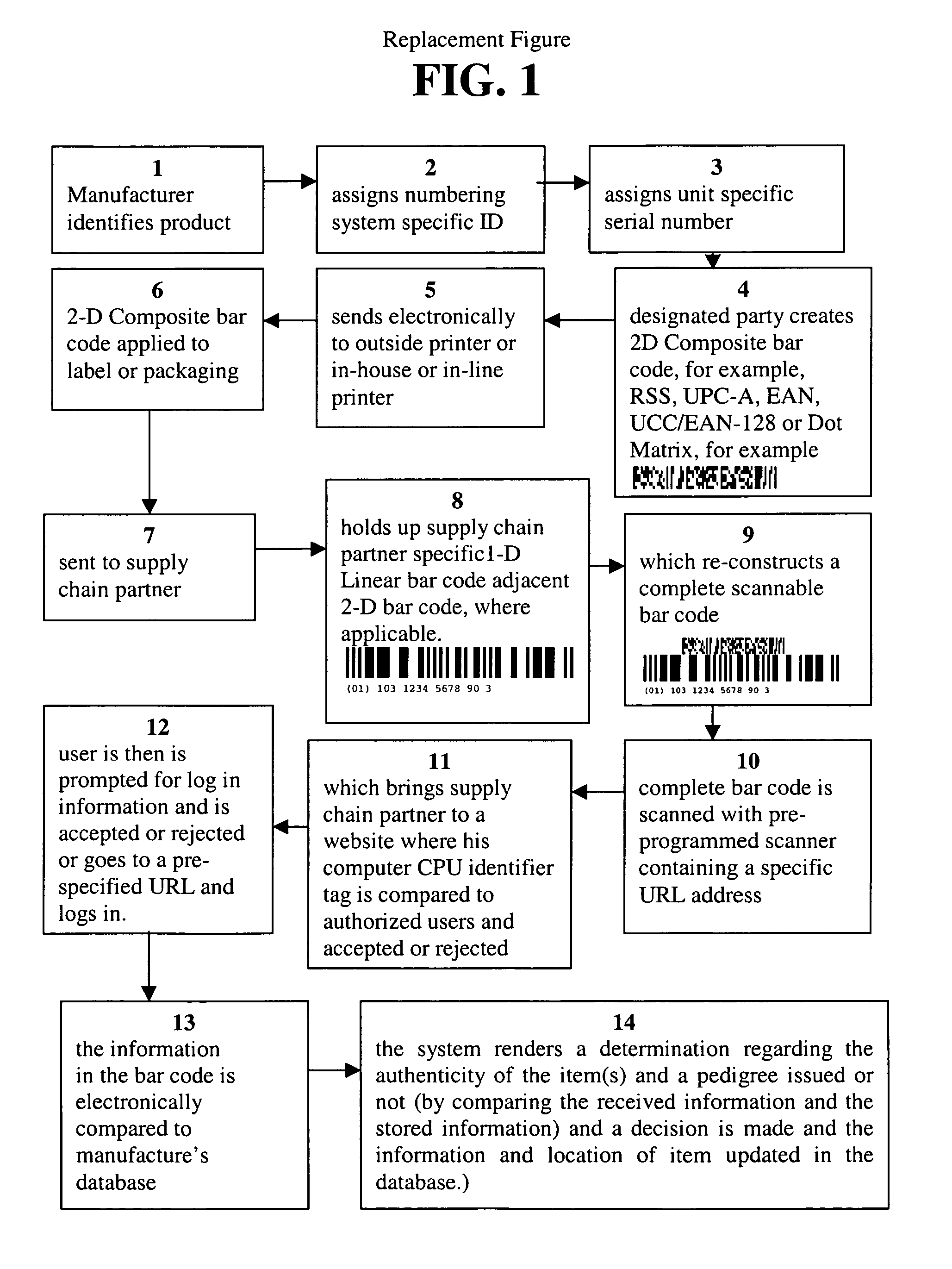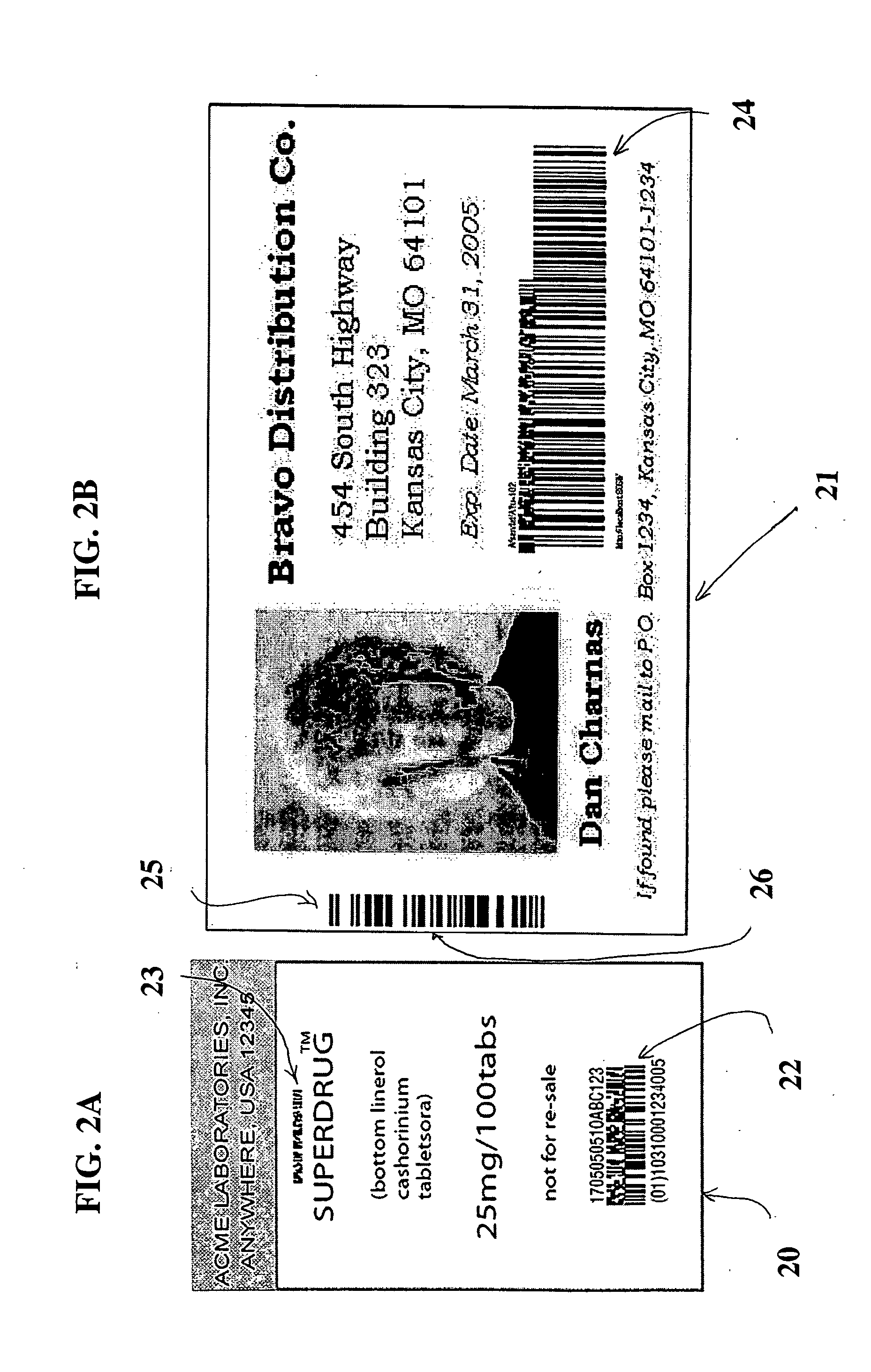As discussed in U.S. Pat. No. 6,631,843, optically encoded indicia, such as bar codes are well known in the art but limitations exist.
Conversely, the amount of information is constrained by the size limitations on the bar code.
Unfortunately, only a handful of these symbologies are in current use, and fewer still are widely known and used internationally.
Unfortunately, traditional 1D bar codes, due to their low
information density storage capacity, can carry only a limited amount of information, on the order of ten to twenty letters or digits assigned under relative standards to general-level type information.
Unfortunately, bar codes as “dumb” vehicles for information have the limitation of being held to a space requirement that puts a ceiling on the amount of information that can be contained in the bar code.
Unfortunately 2-D bar code use (and 2D symbology use) in the retail sector is limited by the requirements dictated by the Uniform Code Council (UCC) standard symbology for retail, UPC-A bar codes.
As will be noted, this code is designed to be especially tolerant of differing printing methods and allows the bar code to be scanned omni-directionally, speeding up the scanning process, but with the price of severely limiting the amount of data.
Since many retailers have not purchased 2-D or 2D bar code scanners, the use of 2-D bar codes in the retail sector provides an additional limitation and risks
confusion.
Unfortunately, not only must the
scanner be able to properly decode and parse the information contained in the particular codeword, the
scanner must also determine where the codeword fits in relation to other code words within its row and with respect to other rows of code words.
One type of 2D symbology, “
Matrix Type codes” (Maxi-Code,
Data Matrix etc.) codes provide this type of high
information density storage capacity in a reasonable size, but are also susceptible to inter-row cross-talk problems during use.
As an additional problem, Matrix codes are not decodable by a
laser scanner (must therefore be read by a more sophisticated and costly optical scanner) and therefore may not be used in many
laser-scanning applications.
In sum, the use of 2D symbology is growing very slowly due to large infrastructure costs, the cross-talk problem noted above, and other concerns commonly known.
Unfortunately, some restrictions exist using the CS format.
Unfortunately, where new 1-D, 2-D, or CS technology is created, infringers, copyists, counterfeiters, and other criminals rapidly attempt to duplicate or copy a particular bar code to
gain legitimacy and move their goods into or through a legitimate means and into the opt-in manufacturer-supplier-customer network.
The shipping agent looses the one box and reports the loss to the manufacturer.
Here, because the
linked data base
system can only track a product by “higher-order information” and cannot track a product by a designated specific-item information e.g.,
individual item bottle /
dose /
pill (and because the counterfeit bar code is therefore legitimate), the
pharmacy when scanning the counterfeit / stolen goods cannot detect the error, the manufacture cannot detect the error, and the
pharmacy sells the stolen / counterfeit goods to the public.
It is estimated that approximately 30 billion dollars, or about 10% of the entire world
pharmaceutical drug market is “lost” annually (via theft, physical loss, counterfeiting, improper returns, legitimate returns, or damage).
Unfortunately, each step requires an additional change in the manufacturing or
review process or has various negative drawbacks related to cost.
As a consequence, the EPC™ system unfortunately necessitates all of the
software, hardware, and RFID configurations included in an integrated
superstructure, as well as being dependent on the unproven
online database for tracking and reporting.
Several drawbacks to the RFID system include the expensive, and the interconnected and integrated infrastructure necessary to support the utilization of RFID as a vehicle for the transportation of information.
Unfortunately, many suppliers, and indeed Wal-Mart itself, may not meet this requirement.
Many shippers, transporters, manufacturers, and retailers employ unshielded electrical and
data lines throughout their facilities.
Consequently, before efficient and secure RFID use is achieved, substantial infrastructure costs and reinvestment may be necessary.
RFID transmitters cannot be turned off.
These concerns have caused privacy advocates to raise objections with the RFID technology.
 Login to View More
Login to View More  Login to View More
Login to View More 


